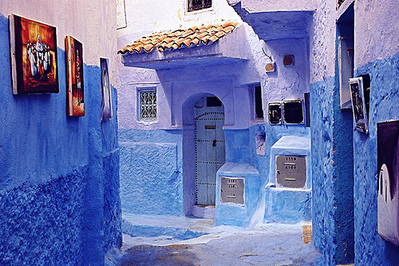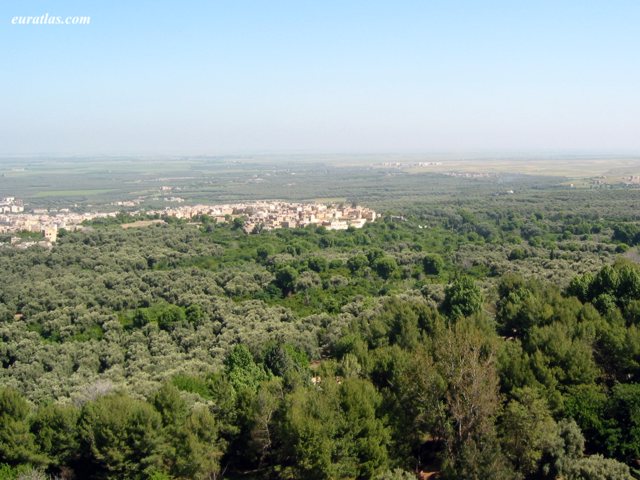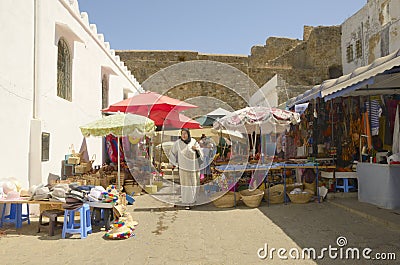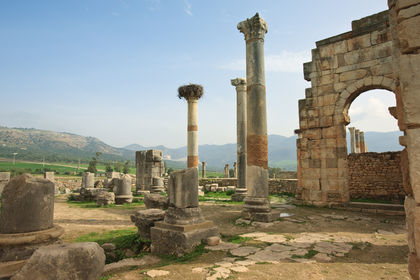Essaouira: the cedar, the skala



One of the beautiful city of Morocco, with its beautiful beach and its blue color, it has one of the most prestigious monuments of the city bleux essaouira the SKALA is at the door of the Navy, to head the Moulay.el up-Hassan and turn left into the Rue de la Kasbah along the ramparts and we follow through. Cross the passage under the arch to discover in the former warehouses of ammunition artisan workshops marquetry. Their works are cedar burl inlaid with satinwood, ebony and sometimes copper wire. Up the ramp leading to the platform of nearly 200 m long, protected from the ocean by a crenellated wall made of boulders sawn. Seen from above, there are still traces of the hole saw and a remnant of the maneuver which served to move these rocks. Beautiful collection of bronze cannons trained on the ocean.
in the year 1184 of the Hegira to connect the port city, it was built by an English renegade. It is OMEE two columns of a triangular pediment classic. The set has a lot of pace. A staircase can sometimes reach the top of the wall of the port Skala and even climb the turrets. Very nice view of the islands and purpuraires on the beach. The guns are polynomials emblazoned Portuguese, Spanish and Flemish. It is in this amazing scene Orson Welles shot scenes for his Othello would win the Palme d'Or at Cannes in 1952.
Mainly devoted to fishing, this is one of the busiest spots in the city, especially the return of the boats. The fish is then sold at auction. A show not to be missed. Access to the port by the customs post at the top of the beach or by the door Madne. The docks are processed in shipyards. You will see the construction of wooden boats as we all do little more built elsewhere. Their shape is reminiscent of the old dhows.
Essaouira is a coastal city situated in the western Morocco. The Berber name of it (tassort) means the wall, a reference to the fortress walls which enclosed the city. The present city was built during the 18th century and in the 19th century during this period Essaouira was the first seaport in Morocco. The city stands on a vast bay with miles of sandy beach on the south and hills on the east. Visitors are usually attracted to its beaches, fresh seafood and medina and the gnaoua music festival.
Essaouira is called the wind city and is good for surfing , with good winds for most days of the year, it is a watersports paradise. But this city is not ideal place for swimming or sunbathing as the water is pretty cold. At the same time the city is protected by the natural bay and water near the coast is almost waveless.
Essaouira is a perfect example of a late 18th century fortified town which presents itself as a city full of culture, several small art galleries can be found all over the town. The Gnaoua Festival of World Music is held in this city in the last week of June, and has been running for over 10 years. But Essaouira's biggest attraction may be its relaxing atmosphere.
The Medina is the walled centre of town and is free of cars and it's also quite clean, it’s a home for many small arts and crafts businesses, the craftsmen are good in making wooden souvenirs such as boxes, chessboards and other kinds of work crafts which you can buy in the city's hundreds of shops, but the souks are great for shopping.
The fortified harbour of the city is a hive of activity with fishing nets laid out on the quayside, boats unloading their catches, fish auctions and stalls serving seafood sizzling on grills.
TransportEssaouira
Most people get to Essaouira by bus since there is no train station. There is a direct daily bus traveling from Casablanca to Essaouira which takes about 6 hours. Buses from Marrakech take around 2.5 hours and several companies travel this route. The bus station at Bab Doukkala in Marrakech is where the buses leave from. Grand Taxis will take you to Essaouira from the Marrakech airport (during the daytime). Alternatively you can get a taxi to the main bus station in Marrakech and then go by bus to Essaouira.
You can walk around Essaouira for the most part, that's the charm of this town. Petit taxis are the best way to get from the bus station to your hotel although taxis can't go into the Medina. You can rent bicycles and motorbikes in the town as well.
Eat and drink
Essaouira is a fishing town and you have to try the local grilled sardines. Any restaurant along the harbour front offers daily fresh fish specials. Some of the best restaurants are in Riads in the medina. The Place Moulay Hassan on the edge of the port is an excellent spot for a drink and some cheap Moroccan food. There are also many reasonable restaurants and cafes on the main streets and squares. The "Alcohol shop", only one in town, can be found outside of Bab Doukkala in a large market street. Mint tea is available all over the town.
























